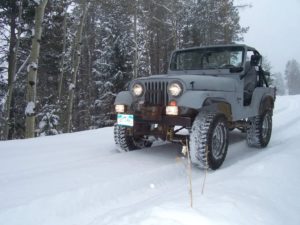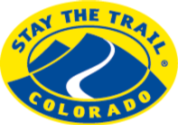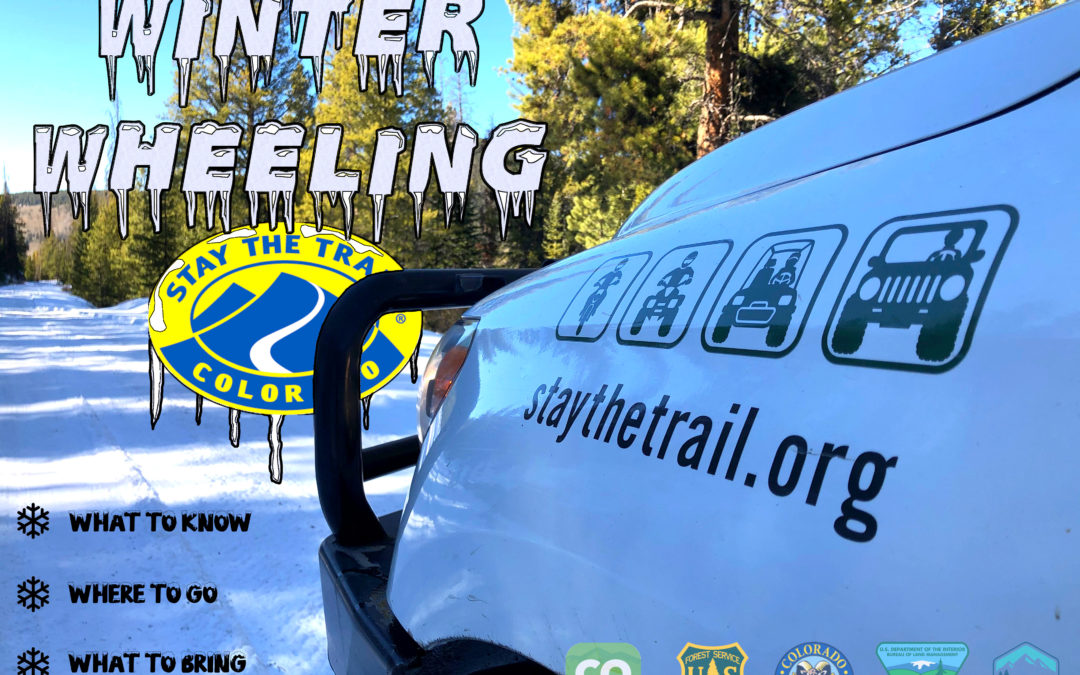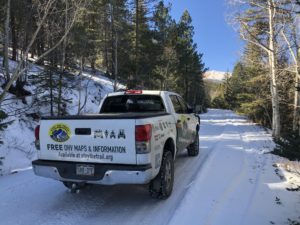
Winter Wheeling
With the fall season slowly dwindling away, many high elevation routes and trails are now experiencing snow fall, ice, and freezing temperatures. However, winter doesn’t signal the end of “wheeling” season. Winter Wheeling and “snow bashing” offer even more of an adventure while conquering Colorado’s backcountry routes. Whichever machine you attempt to put through its limits while plowing through drifts or keeping the throttle wide open to maintain momentum while digging down, there are some important things to know about your public lands access during the winter wheeling season and how to prepare.
Seasonal Closures
Many routes on US Forest Service land are subject to seasonal closures. Seasonal designation routes were determined through a travel analysis process (TAP) where each route was rated for Recreational Use Benefit, Fire/Fuels Access Benefit, Timber Access Benefit, Special Use Access Benefit, Resource Management/Range Access Benefit, Watershed Risk, Wildlife Risk, Botany Risk, Archaeology Risk, Public Health & Safety / Financial Burden Risk, and Road Management Opportunities and Priorities. Each category was then rated for every route by the Total Benefit and Total Risk factors, and assigned to one of four possible road management categories as follows:
- High Benefit/High Risk (H/H)
- High Benefit/Low Risk (H/L)
- Low Benefit/High Risk (L/H)
- Low Benefit/Low Risk (L/L)
The total score for each route determined its outcome for the dates open, total route length, or in some cases, a complete closure. Seeing as all routes are now in a data set, misuse and abuse can change the scores corelating into a future permanent closure. For this reason alone, please respect the current closure dates and adhere to the rules and regulations for each specific route. Groups like CORE and the Colorado Off Road Trail Defenders work with land management agencies and the public to help keep “on the ground information” accurate with the ultimate goal of keeping trails open!
More information about the USFS TAP can be found here: https://www.fs.usda.gov/Internet/FSE_DOCUMENTS/stelprdb5435022.pdf
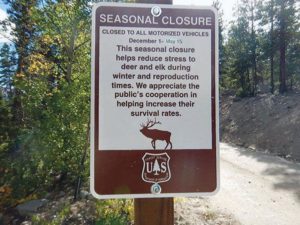
What Routes are under a Seasonal Closure?
The MVUM (Motor Vehicle Use Map) is the “law” to what routes can be accessed by what type of machine(s)/vehicle(s) and to what dates they are allowed. Regardless of what you see on the ground that differs, or what you might read online, it is the users’ responsibility to read, understand, and practice the MVUM regulations before, and while venturing out. Many ranger districts now offer a WINTER MVUM as well, which indicates the different rules and regulations for OSV’s (Over-Snow Vehicles).
More information on the USFS OSV Travel Management Rule can be found here: https://www.federalregister.gov/documents/2015/01/28/2015-01573/use-by-over-snow-vehicles-travel-management-rule
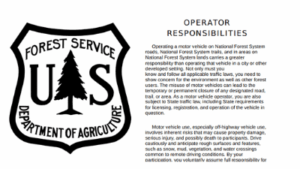
Where to go?
A list of all the MVUM’s can be found here:
https://staythetrail.org/mvum/
COTREX mobile mapping app including seasonal designations:
Groomed Routes
Although some routes on the MVUM will indicate no seasonal closure for winter travel, if that route is groomed, then it is only accessible by tracked vehicles only. The USFS will often create a special order for that route, prohibiting wheeled vehicles during the grooming season. This is to prevent ruts and stuck vehicles inhibiting grooming operations, and leaving clean corduroy for snowmobiles, cross country skiing, snow shoeing, and fat tire biking.
A list of groomed routes can be found here: https://www.snowmobilecolo.com/content.aspx?page_id=1980&club_id=45117#search_results
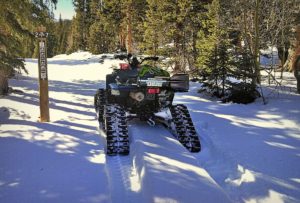
Tracks on Motorcycle, ATV, Side by Side, or Truck/Jeep
Once you equip a vehicle originally designed for dirt or road use with tracks, you are now required to register it as a snowmobile. This will be a separate OHV registration and costs $30.25 which is valid October 1st through September 30th each year. Definition of a snowmobile: “Snowmobile” means a self-propelled vehicle primarily designed or altered for travel on snow or ice when supported in part by skis, belts, or cleats.”
Link to Colorado Parks and Wildlife Legislative Statutes Title, Article Snowmobile33-14-101. Definitions.
https://cpw.state.co.us/thingstodo/Pages/SnowmobileLegislativeStatutes.aspx
Implementation Guidance for the U.S. Forest Service Over-Snow Vehicle (OSV) Travel Management Rule:
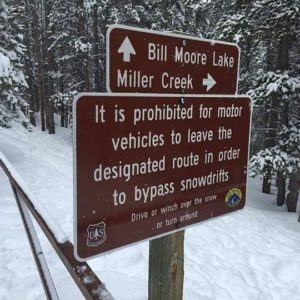
Time to Wheel
Once you have familiarized yourself with where you plan on going, the rules and regulations, and the applicable guidelines, it is time to get yourself and your vehicle ready! Obviously as the name applies, winter wheeling is a cold oriented adventure. Always be prepared to spend time outside, or off your machine in the snow. Boots, shells or gators, jacket, hat, and gloves are always the necessity. Having extras of these in a backpack or duffle bag will provide additional comfort once your originals get wet.
Water, food, and communications are key as you are most likely to get stuck. But that is half the fun! Let someone know where you are going and don’t forget your charging cable as cold temperatures will drain electronic devices quickly.
Preparing your vehicle is crucial for snowy outings! The number one tool every vehicle should have is a shovel. You can find them in every size and carrying multiple allows others to help dig as well. Additional items you should always carry are a first aid kit with hand warmers and emergency blanket, fire extinguisher, flashlight(s), matches/lighter, recovery gear and a tool kit.
A winch, tow straps, tree savers, snatch block, soft and hard shackles and tire chains should be a requirement when venturing out solo (risky) and should all be in operational condition. Make sure to carry a jump pack or jumper cables in the case of exhausting your battery while performing recovery operations. Extra winch cable and long straps also come in handy as you are most likely going to need a long line pull or redirection to get you back on track after becoming stuck. Situations above tree line can be extremely dangerous with little to no chance of self-recovery.
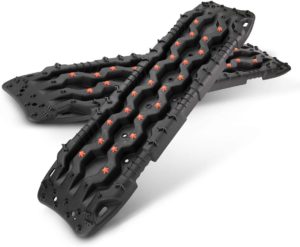
Traction boards have now become popular and can be found cheaply. They are definitely a beneficial item if you frequent snowy or sandy conditions.
Make sure your fuel level is topped off, your fluid levels are filled, and you have extras just in case. Snow bashing will clog up every orifice possible and can lead to malfunctions. Belts will slip, things will clog, and parts will freeze. Be prepared for something to go wrong, and lucky if things go right.
Air down. Airing down your tires will improve the contact patch, smoothen the ride and aid in traction. Carry a spare tire or patch/plug kit and compressor for airing back up.
Other items to consider when traversing extremely snowy remote areas are avalanche beacons, a SPOT device, SAT phone, and flares.
While winter wheeling seems dangerous, it can be fun and safe if done correctly. Know yours and your vehicles limitations, don’t venture out alone, know before you go, and be prepared!
In the case you end up stuck and can’t recover, Colorado 4×4 Rescue and Recovery can lend assistance!
